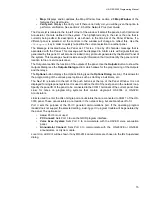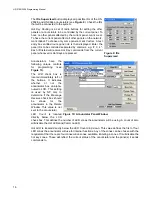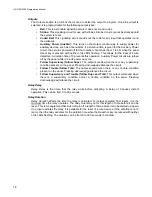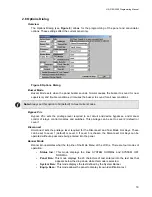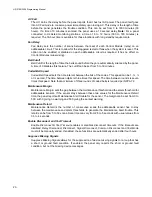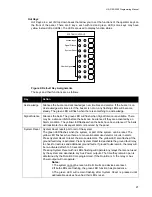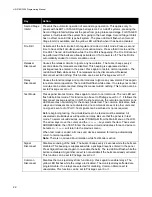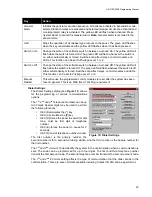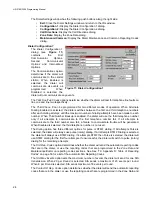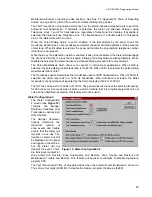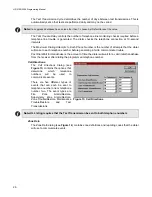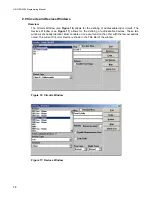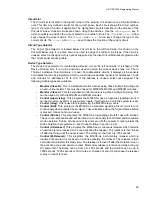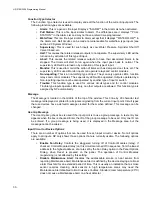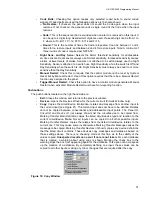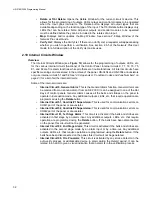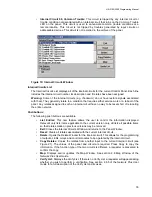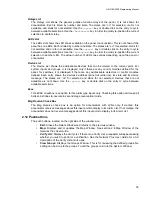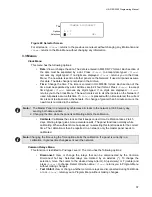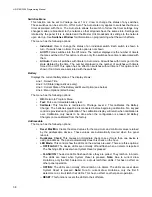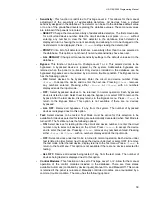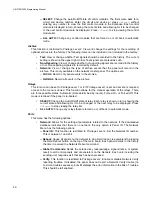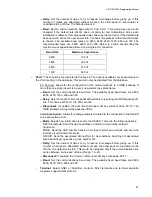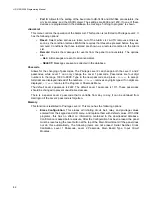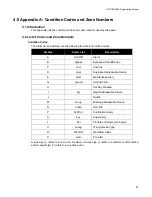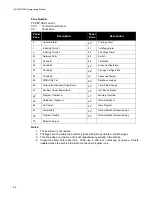
HS-3100/3200 Programming Manual
29
Circuit List
The
Circuit List
is located in the top left corner of the window. It is shown on the Circuits Window
only. This lists any defined circuits for the current panel. Each circuit shows the circuit number,
type of circuit and function if applicable. The highlighted circuit is described in the title bar of the
Circuits Window. Unused circuits are shown using three dashes. Use the
<Backspace>
key in
order to quickly re-position the current selection to another circuit. The
<Up>
and
<Down>
Arrow
keys change the current circuit. The
<Right>
and
<Left>
Arrow keys change the type of the
current circuit. The
<Plus>
and
<Minus>
keys change the function of the current circuit.
Circuit Type Selector
The
Circuit Type Selector
is located below
Circuit List
on the left hand side. It is shown on the
Circuit Window only. It is a drop down box used to assign the current circuit type. If the circuit is
unused, select not assigned. Only options supported by the Input Circuit Modules programmed for
the current panel are assignable.
Device Type Selector
The
Device Type Selector
is located below
Device List
on the left hand side. It is shown on the
Device Window only. It is a drop down box used to assign the current device type. Ion, Photo,
Thermal, Acclimate, Dual Acclimate, or Laser. For addressable circuits, it displays all the sensors
or modules that can be programmed for the current device address, sensors for addresses 1 to 99
and modules for addresses 101 to 199. If the address is unused, select not assigned. The
following module types are available:
•
Monitor (Class B):
This is a standard monitor module using Class B (Style B) wiring and
an end-of-line resistor. This must be chosen for M500DM, M501M and M503M modules.
•
Monitor (Class A):
This is a standard monitor module using Class A (Style D) wiring. This
can be used only with the M500M and M502M modules.
•
Control (supervising):
This programs the M500S for use as a generic signalling circuit. It
can be turned on by alarm or supervisory inputs. It will remain on until the system is reset.
•
Control (relay):
This is used for programming the M500R relay module.
•
Control (Bell):
This programs the M500S as a standard signalling circuit. It will turn on
continuously when activated by an alarm. They will silence when the
Signal Silence
button
is pressed. It does not sound codes.
•
Control (Strobe):
This programs the M500S as a signalling circuit for use with strobes.
They are non-silenceable and will be turned on continuously for both Alert and Evacuation
mode operation. Strobe circuits cannot be silenced until the system is reset (unless the
strobe duration is programmed – see
Strobe Duration
in section 2.5.2).
•
Control (C-Releaser):
This programs the M500S as a continuous releaser which remains
on until an alarm is received on a zone activating the releaser. The releaser is then turned
off after the
Delay
until the panel is reset. The
Delay
can be from 0 to 180 seconds.
•
Control (M-Releaser):
This programs the M500S as a momentary releaser which is
inactive until an alarm is received on a zone activating the releaser. The releaser is then
not activated until after the
Delay
time. The releaser is turned off after the
Duration
time, or
the activating zone and panel are reset. Momentary releasers function normally during an
AC power fail. The
Delay
can be from 0 to 180 seconds and the
Duration
can be up to
1800 seconds. 1800 seconds is 30 minutes. A
Duration
of zero (0) will cause the releaser
to stay on until it is reset.
Summary of Contents for HS-3100
Page 2: ......
Page 4: ......
Page 6: ......
Page 64: ...Harrington Signal Inc 2519 4th Avenue Moline IL 61265 HARRINGTON FIRE ALARM SIGNAL INC...

